Ford Escort + Jag-Daimler XJ40 + VH SS Commodore + more - Morleys Workshop 412



|
Morley has been dragging the chain on the Escort project but there's heaps going on about XJ40 Jags, a VH SS race-track refugee, XE Falcon durability, and yes, even the EJ/red motor question
MORLEY'S WORKSHOP
Escort Service
Not a whole lot has been happening at the Melbourne Bloke Centre. After a quiet January, it seems like every editor I’ve ever worked for wants a million words on the latest big thing. And they want ’em now. As a result, the RS2000 is still not back on the road after I cooked the head-gasket back before Christmas. But fear not, because it’s not far off, and the little white monster will be out terrorising the hot-hatches again soon.
How far is not far off? Well, after checking that the head was still straight and lapping in the valves to correct a leak or three, my old mate Bondini and I finally got around to bolting the head back on and timing the camshaft. Mind you, that could only happen after I’d bought a new belt tensioner and we dug around Bondini’s workshop trying to find the tensioner spring that somehow managed to make a break for freedom. It didn’t get far on foot.
The other hurdle was that I had to buy a new torque-wrench to do the head bolts. Torrens borrowed my old torque-wrench a while back to tighten the heads on his Dak-Dak, but before he’d tightened up the first nut (air-cooled VWs use a nut on a stud rather than head bolts) his experience told him that my wrench was telling porkies. Another borrowed wrench confirmed his hunch. So the old torque-wrench got the flick and I lashed out and bought a brand-newie. Not before I actually needed it, of course, which meant another trip to the tool shop cutting into our actual working time. Ever noticed that doing any particular job is usually equal parts tackling the actual job and faffing about trying to find/buy/borrow the stuff required by the task in question?
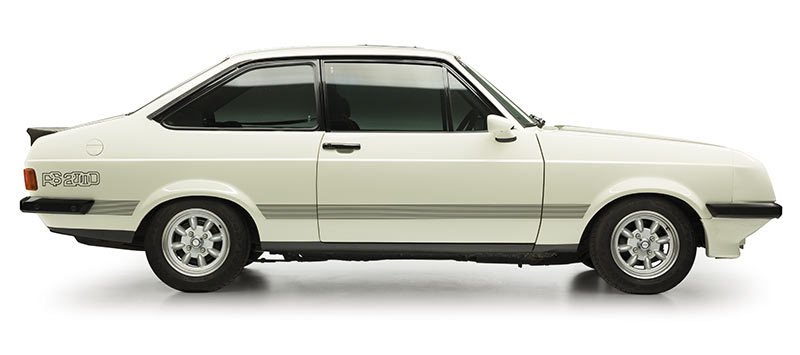 Anyhow, the head is now on and I’ve re-set the rocker clearances which is not actually too hard to do on a Pinto if you have a set of feeler gauges and enough brains to pick an exhaust valve from an inlet. Next step is to bolt on the manifolds, hook up the plumbing and bolt down the rocker cover. Then I’ll fire it up, run it for about 20 minutes to get it warm, shut it down, rip off the rocker cover and do a final torqueing of the head bolts.
Anyhow, the head is now on and I’ve re-set the rocker clearances which is not actually too hard to do on a Pinto if you have a set of feeler gauges and enough brains to pick an exhaust valve from an inlet. Next step is to bolt on the manifolds, hook up the plumbing and bolt down the rocker cover. Then I’ll fire it up, run it for about 20 minutes to get it warm, shut it down, rip off the rocker cover and do a final torqueing of the head bolts.
Speaking of Pinto head bolts, I noticed that they use a Torx head which, in my limited experience, suggested to me that they were a stretch-fit deal and could only be used once. But a phone call to a local Pinto specialist revealed that they could, in fact, be reused, saving me a few bob. It’s common enough advice, but when in doubt, ask a grown-up.
Project Duckpoop, meantime, has also been sitting around like a stale bottle of you-know-what with only little jobs getting done. But even if progress has been slow, some has occurred and the brown girl now has padding on its roll-cage. And, with the car back on its wheels, I could finally borrow a mate (Torrens again) and do a final tighten on the roll-cage mounting bolts. That would have been easier with the car on the hoist, but that may have meant that any twist in the body (some cars get so much twist on a hoist that they won’t allow you to open one or more doors) would have been perpetuated by the roll-cage. By tightening the cage with the car on its wheels on flat ground, it gets locked into its natural, relaxed position by the rather extensive, eight-point cage. Much better for something that is hopefully going to handle like a scalpel. Okay, a butter-knife, but you get the point.
HERE'S MY TIP
Double trouble

When you buy a kit or a set of anything, make sure you unpack it all before starting any job and see exactly what you’ve got. I got caught the other day after buying a top-end gasket kit for the Escort. We figured we’d fit a new front camshaft seal, so I headed off and paid yet more money for the seal in question. And about an hour later when we broke into the gasket kit to start assembling the rest of the engine, guess what we found? Yep, the VRS kit included the very same cam seal I’d just bought for the second time.
LETTERS
Still showing red
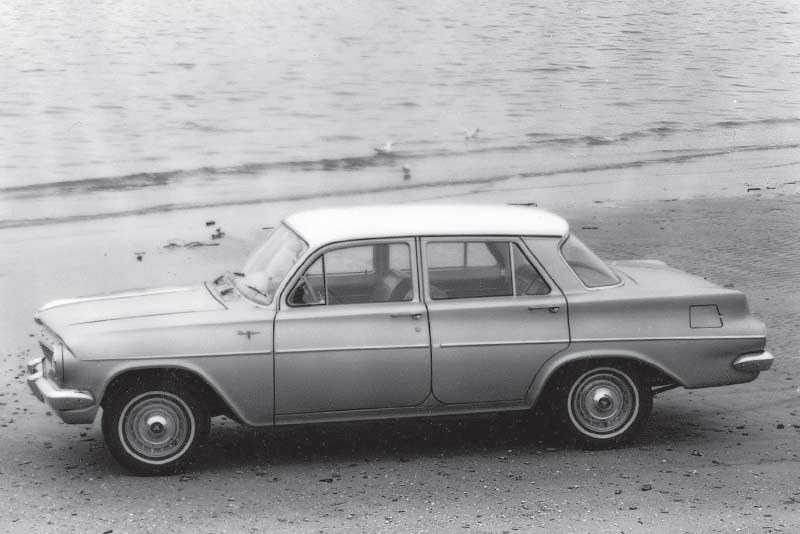
I read you are still talking about EJ Holdens with red motors. They did exist. We had a customer at the service station where I worked in Huntingdale (Melbourne) who worked at GM. He had a high-up job; not sure what but he was always well dressed and we even saw him driving an XM Falcon which, I think, was for testing.
He turned up one day to show us his new car: An EJ Holden with a red motor. The car had been used for testing, then it got rebuilt and he was able to buy it. I think it was beige with a brown top.
By the way, I got my license on the August 24, 1964 in a brand-new EH 179 manual. All the cop wanted to know was how fast it went.
Howard Reynolds,
Email
Now, this is very interesting Howard, because an old mate of mine who worked at Holden back in the day (and who is no longer with us) used to moonlight at a service-station somewhere around that part of Melbourne (he had seven or eight kids) and I seem to remember him telling me about a manager of some sort who snavelled a `special’ EJ Holden as his company car. Apparently, sometime in 1964, the fella in question was told he could come and pick up his new EH company car, but when he sat in it, he found the modified EJ gave him more headroom. So he elected to keep this one-off EJ. Could it be the same bloke? How good’s your memory Howard? Was he a tall chap?
Meantime, the idea of a Holden management geezer being able to get hold of an ex-engineering test car seems fairly likely, especially back then. And even if you don’t hold with the idea of any EJs ever making it off the production line with a red motor on board, you’d have to concede that Holden must have had red-motored mules running around prior to the launch of the EH. And what would you base those test mules on? Yep, the EJ, since it was the then-current Holden (so wouldn’t raise any suspicions if seen in the street) and it was the model that most closely represented the EH’s various mechanical, performance and dimensional attributes.
Presumably, they would all have been scrapped at the end of their testing days, but if a particular management high-up decided he wanted to keep his (‘cos he couldn’t wear his hat in the new EH) then who knows…
Meanwhile Howard, good for you for somehow managing to take your driving test in a brand-new EH 179 with a manual box. That’d be like a kid going for his license right now in a brand spanking HSV Senator. The EH with a 179 was about the fastest thing on four wheels back then, and I reckon it might have been taking a bit of a risk, because there’s no way a copper on a constable’s wage would have been driving anything remotely as cool back then. At least you seem to have scored a bloke who was a petrol-head. But the question remains unanswered: Did you find a quiet bit of road and show the walloper just what an EH 179 could do?
Me? I did my test in a 1969 Toyota Crown. That was genius: All the copper wanted to do was make sure I could change gears and identify the brake pedal from the throttle, and then get the hell out of the old death-trap. The test lasted precisely one lap of the block. And yes, I passed. I miss the good old days.
Red letter day
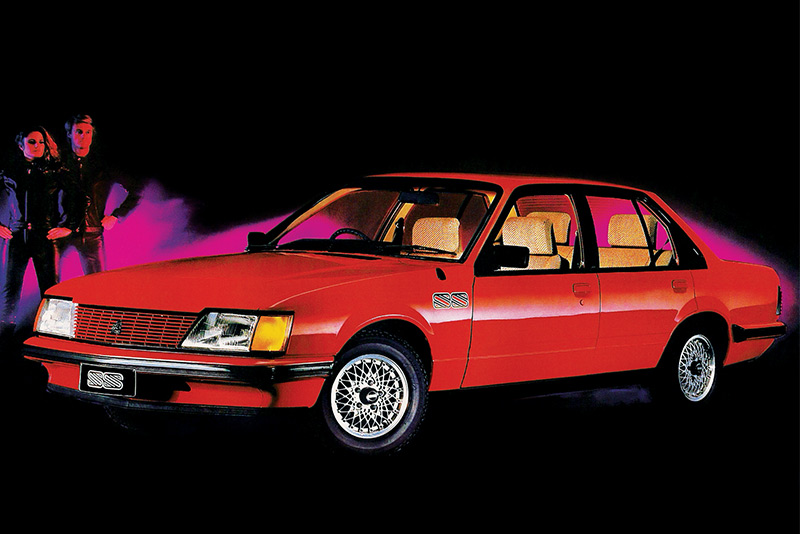
During the restoration of a factory VH SS 308 (not HDT) the word `sport’ was found written in red paint under the tar insulation on the drivers floor pan (tar was removed using dry ice).
After contacting Holden historical services they said this was not a normal production marking and suggested I speak with HDT. HDT said they had heard of cars being marked like this.
I then spoke with Phil Brock who suggested contacting Esmond Edwards who was the race coordinator for GMPA Dandenong in the day. In turn, Esmond confirmed that he did remember this mark being used on a few rolling chassis for race teams.
This VH is a late-build just before the VK started, so it appears that it was not used and then turned into a road car. So where are the rest if any more are out there?
Alan Griffiths,
Email
Sounds to me, Alan, that you might have stumbled on to a car that was earmarked for a touring-car team (perhaps the mighty HDT itself) which was then discovered to be surplus to requirements and thrown back on to the production line to be finished off as a road-car. Which also seems to be the conclusion you’ve drawn. It makes sense that `sport’ was painted on the bare floor before sound-proofing was added, because a race-car wouldn’t have had sound-proofing in the first place. It further makes sense that a VH Commodore SS was the model chosen, too, as these had all the mounts and holes for a V8 installation as well as being based on the base-model VH, making them the lightest of the V8 range.
But here’s how to tell definitively if your bodyshell was once destined to become a race-car: The race-car shells were, I’m told, built in batches and were usually white. That doesn’t mean they couldn’t have been painted a different colour later on, but they usually started life in stark white. The other giveaways are that the shell will be double seam-welded, so you’ll need to get down and dirty to check the welds and see if they are in fact double-seam jobs. The third clue is that the race shells had captive nuts welded into the A-pillar to attach the roll-cage just before it disappeared through the dashboard on the way to the front footwell. If your car has those elements, I’d say you’re definitely on to a race-car bodyshell.
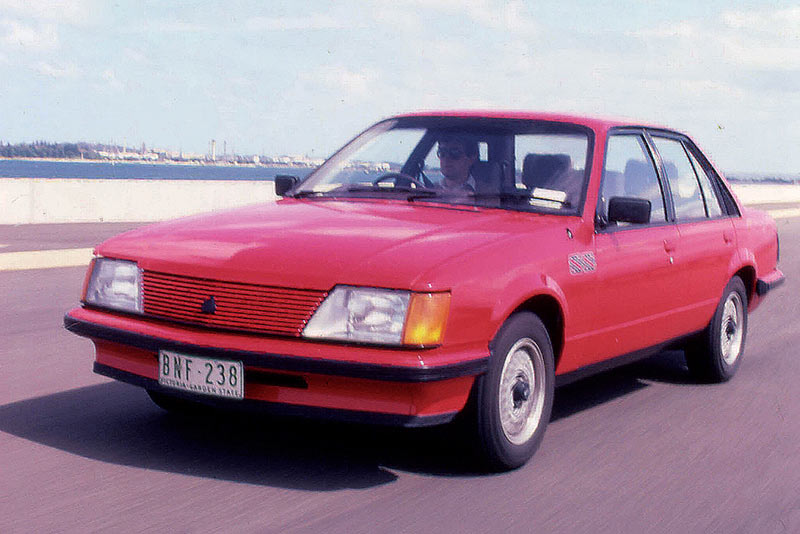
It’s possible to imagine that a bunch of cars would have been earmarked for motorsport duties and that not all of them were ultimately needed, especially as one model (the VH) handed over to the next (VK). You also need to bear in mind that back in those days, the race-car in question did, indeed, need to be based on a production-car bodyshell. That was the CAMS requirement, because a whole bunch of other stuff beyond the body also had to be production-based. Obviously, that’s not how it’s done these days with what are essentially tube-chassis cars with non-structural carbon-fibre body panels and a whole bunch of other stuff you can’t buy from a Holden or Ford dealership. But back in black and white, that was the deal.
So, back to your question: Where are the other `sport’ cars lurking. Actually, I wouldn’t mind betting there’d be a few out there with owners that are none the wiser, purely because they’ve never had occasion to remove the sound-proofing tar and gaze at what secrets lie beneath. Mind you, if you took any VH Commodore at random and removed the sound-proofing, all you’re likely to see is rust, a crack in the floorpan where the driver’s seat mount has stressed the metal over time and a couple of big lumps in the floor where the car has fallen off a jack over the years.
By the way, Alan, the dry-ice thing is a good trick, no? It saves plenty of time and effort with a heat gun and scraper and does a neater job into the bargain. I have to thank Scotty on sister mag Street Machine for the tip, but having used dry-ice on Project Duckpoop, I’ll never try to remove tar insulation any other way.
Durable Daimler?
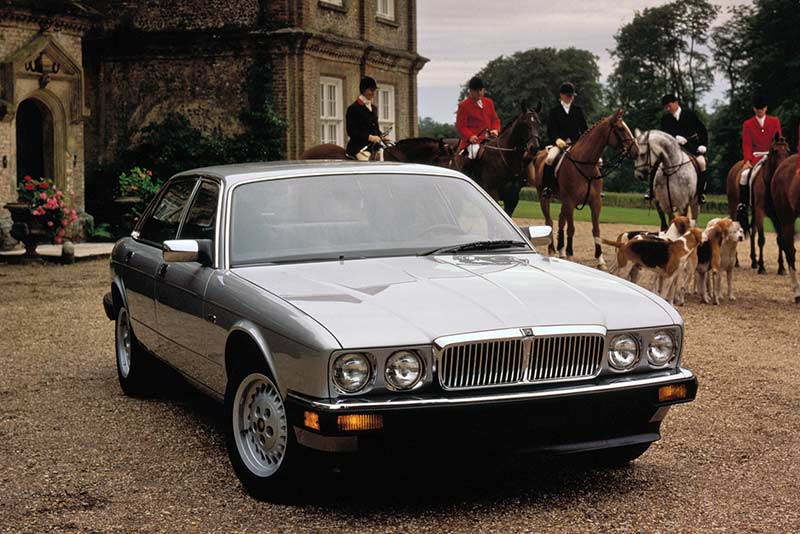
I’m considering a Jag-Daimler XJ40. What can you tell me about engine durability? Are there any niggles to be aware of or any other short comings including suspension? How about build quality?
Ray Anderson,
email
Oh boy, here comes a can of worms. Jaguar and Daimler people really do love their cars and can get quite hot under the collar when anybody dumps on their precious cars. Which wouldn’t be such a problem if so many of them weren’t solicitors and magistrates. But here we go anyway…
The XJ40 was supposed to represent a new dawn for Jaguar in terms of performance and quality. Fundamentally, it was supposed to replace the ageing XJ6 which had run from 1968. But when the XJ40 lobbed in 1986, Jaguar found there was still demand for the old girl, so the XJ6 soldiered on in Series 3 form right up until 1992.
It now seems a bit odd that Jaguar would have sold the pair alongside each other, but I guess it’s management decisions like those that help explain why Jaguar was once sold to Ford and is now owned by Indian giant Tata. Anyway, the XJ40 was designed to retain the nice things about an XJ and build on that with a bit more modernity. So, it got a new family of six-cylinder engines (the AJ6) that retained the famous DOHC layout of the old XK series of engines, but with four valves per cylinder. It also kept the supple independent rear end and, unless you’re completely blind, the XJ40 still bore a striking resemblance to the old XJ6. That said, it was not as pretty as a Series 1 XJ.
As for buying one today, well, it probably shouldn’t be your only car. Don’t get me wrong, they were lovely to drive back in the day, but reliability was not then one of Jaguar’s particularly long suits. From what I can gather, the basic mechanical package is quite well resolved. It’s just the ancillaries that are prone to letting you down. But, obviously, any car of this age can have worn suspension bits and pieces and a gearbox that’s on the way out, so getting a Jaguar specialist to inspect any potential purchase is probably the smartest move you could make.
 It's the Jag's electrical gremlins that can spoil your day
It's the Jag's electrical gremlins that can spoil your day
The big bogey is anything to do with an XJ40’s electrical system. Essentially, if it works on the basis of a flow of electrons, presume it won’t. And it’s not just the power windows; the dashboard on the XJ40 was one of the early electronic ones and even the noise you hear when you turn on the indicators is an electrically-synthesised one and not the simple, reassuring sound of a relay clicking.
The dramas were largely down to cost-cutting at Jaguar, combined with a workforce who tended to despise the very people for whom they were building the cars. And as a direct result, build quality was decidedly iffy.
On the up-side, they’re cheap now and since the world has moved on, they don’t represent the heights of electronic complexity they once did. Find a specialist mechanic with the right experience and you could be on to a dead-set bargain luxo. Running properly, they’re quite good to drive, too, with smooth engines and handling that is right up there with anything Jag’s rivals were achieving at the time. Good luck and let us know which way you jump.
Rebel shout out
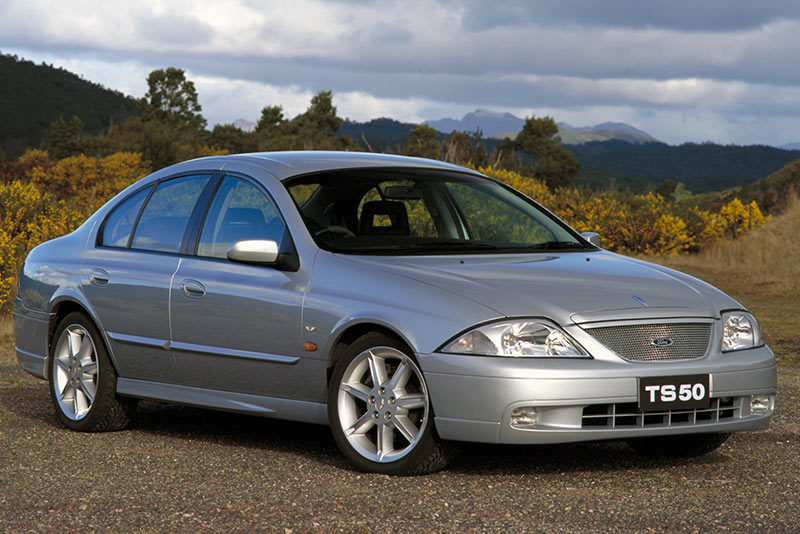
G’day there Dave. Enjoyed your reply to the fella looking for a T-Series Ford and your comments on the AU series 3. I am the proud owner of a late series II ‘Rebel’ which has the identical upgrades as the S3 with the 220kw Windsor, IRS, LSD, brake upgrades and Momo interior. Mine is Winter White and has done just over 100,000km. I have done a lot of work detailing, replacing worn items and improving other aspects.
I agree with you about the handling as I have owned a bunch of XR Falcons, including EL XR8s and the AUII and III are worlds in front in terms of brakes and handling compared with older and, dare I say, newer Fords. One of the best things is that the only driver-aid is ABS. I have a few things in store to wake mine up a little, but nothing that will detract from the car that Ford and Tickford designed.
I would really enjoy a feature on these great AUs that are, in my opinion, the last all Australian effort.
Cameron O’Brien,
Baulkham Hills, NSW
There are people out there, Cameron, who just can’t come to terms with the poor old AU. In fact, there’s a school of thought that it was the AU that sowed the seed of failure that eventually grew into the tree of misery that toppled over in the storm of controversy and started the downward spiral that eventually saw Ford Australia pull out of local manufacturing. Could be, too.
But even if you forgive the old girl that much, the basic AU was still a pretty homely piece of work. But, as I’ve said many times, throw on the XR fascias and body kit and you suddenly had a car that looked a whole hell of a lot better. Yours looks pretty sharp in that stark white, too.
In any case, to all those who reckon the AU was the model that wrecked Ford Oz, I’d just like to offer a counterpoint which recognizes the fact that the AU with its alloy front cross-member and accurate rack was the best steering Falcon the world has ever seen. The EL that went before it wasn’t as accurate and the EA through EFs had that silly high rear roll-centre that spoiled things. Everything before the EA had a steering box, not a rack-and-pinion set-up and the BAs, BFs and FGs that came after the AU just never seemed to have the front-end delicacy that the AU delivered. And as I mentioned last issue, that 220kW tune on the Windsor V8 was so sweet, it actually had calories.
Meantime, you look after that car: If a P76 can become collectible (and it has, apparently) then a 220kW AU XR8 is gonna be worth money someday, too. And you’re already on the right track by keeping your modifications to areas that will improve the thing, but leave the overall character of the car intact.
Speaking of white AUs, fellow UC contributor Dr John Wright was shopping for an AU XR6 when they were first launched and was thinking about a white one. But he reckoned he just couldn’t have lived with the pure white paint contrasting with the black shadows of the panel gaps. I told him to just buy it and have the panel gaps painted white. He thought that was good advice, but went and bought a Sparkling Burgundy Fairmont Ghia anyway. You just can’t help some people.
Long in the tooth?
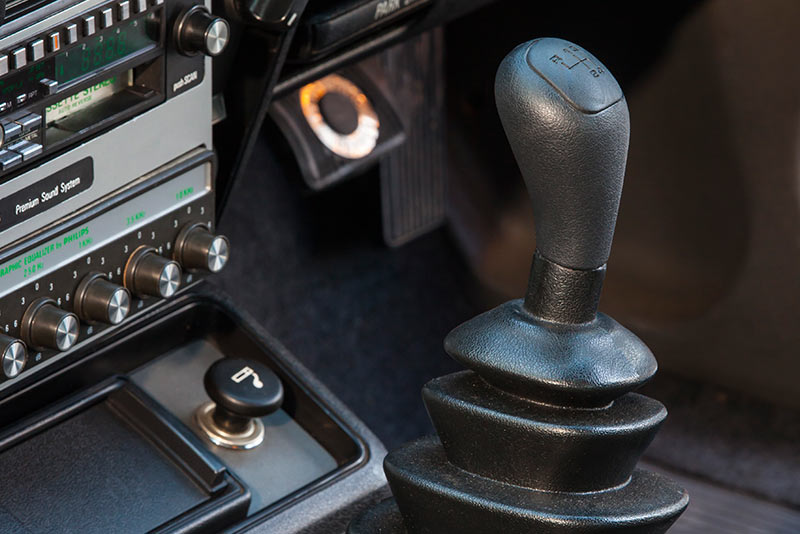
I have a 1983 XE Falcon with a manual gearbox and 167,000km on the clock. At that mileage, people have been advising me to get rid of it and buy something newer, or even brand-new. They’re all telling me that this is more than 100,000 miles and that any car is likely to be worn out by then. What’s the real story?
Also, is it just me, or are all new cars boring? I can’t find anything that would actually replace the XE apart from taking up the same space in the driveway.
Craig Holmes,
Bris-Vegas, QLD
Sounds like your mates are car dealers, Craig me old mate. Because let me assure you, 167,000km is not a whole hell of a lot for a well-maintained XE Falcon to have covered. Yes, it does equate to 100,000 miles in the old money. And yes, cars from the 50s and even 60s were generally ready for a valve-grind and de-coke (if not the knackers’ yard) by then, but the relatively clean burning alloy-head six in the XE will go for at least twice that mileage given the right preventative attention.
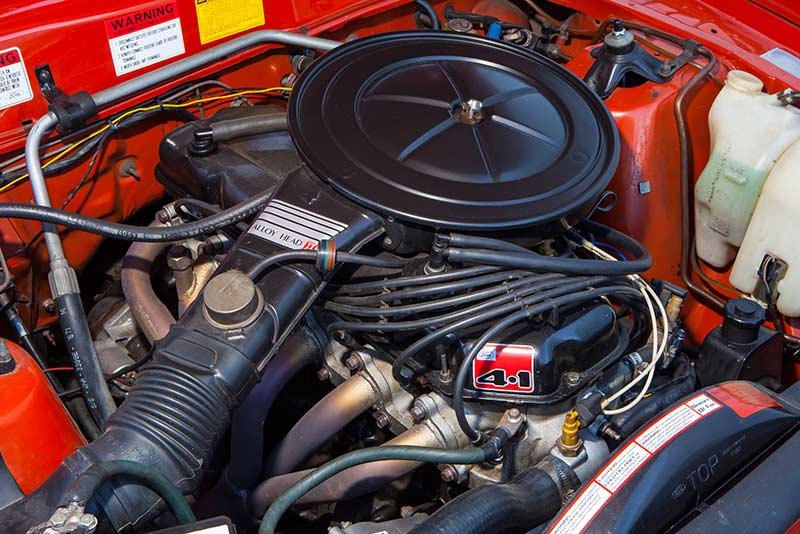 Ford's alloy-headed six is there for the long haul if you look after it
Ford's alloy-headed six is there for the long haul if you look after it
Make sure you change the oil regularly (and don’t forget the filter) and warm it up before giving it the berries and it’ll continue to put a smile on your dial for many years to come. Watch the values of these old Falcons hit their straps in the next handful of years, too. And yours will definitely be a prized catch if you ever do decide to sell it, because even though the doomsdayers would have you believe otherwise, 167,000km is actually very low mileage for an XE.
Meantime, I reckon you’re dead right about modern cars. With a handful of exceptions, they’re about as interesting to own as a turnip. The big selling point these days is safety and there’s no doubt a new car is going to look after you better in a shunt, but even then, I have my doubts. See, from where I sit, air-bags and autonomous braking are simply messing with natural selection.
TRIVIAL PURSUIT
Injection perfection
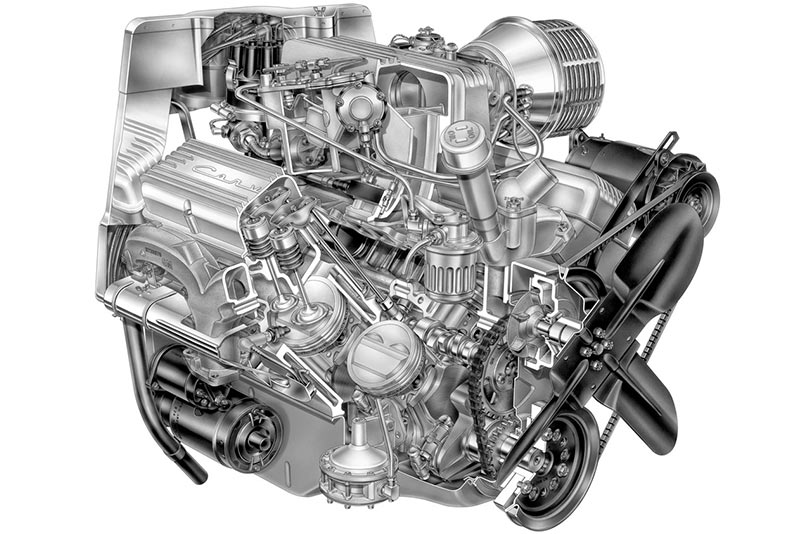
It’s quite fashionable to chortle up your sleeve when it comes to American cars and new technology. But in the case of fuel-injection, the Yanks weren’t far off the pace at all. While Mercedes-Benz is well known to have fitted fuel-injection to a production car with its 300SL of 1954, the very first injected petrol production car was a Goliath GP700 (also German-made) in 1952 which used basically a diesel injection pump with a throttle valve. But by 1956 (for the 1957 model year) Chevrolet was offering Rochester mechanical injection on 283-cube versions of its Corvette.
Forza Italia
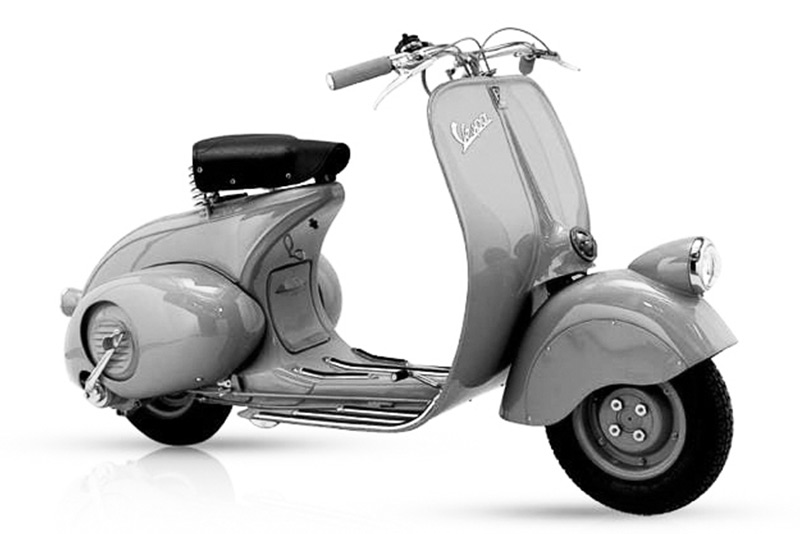
You probably know that the Vespa motor-scooter was Italy’s answer to getting working people on wheels after WW2. But equally clever was the way the Vespa’s very early design used military surplus gear (Piaggio had made aircraft during the war) to its advantage. The front wheel and single-sided suspension, for instance, was actually a left-over landing wheel for a Piaggio fighter plane and the Vespa’s frantic little two-stroke motor had originally been the starter-motor for a piston plane engine. Brilliant!
Write to Morley c/o uniquecars@primecreative.com.au or Unique Cars magazine, 379 Docklands Drive, Docklands, Victoria 3008
Unique Cars magazine Value Guides
Sell your car for free right here
Get your monthly fix of news, reviews and stories on the greatest cars and minds in the automotive world.
Subscribe

.jpg)







.jpg)



